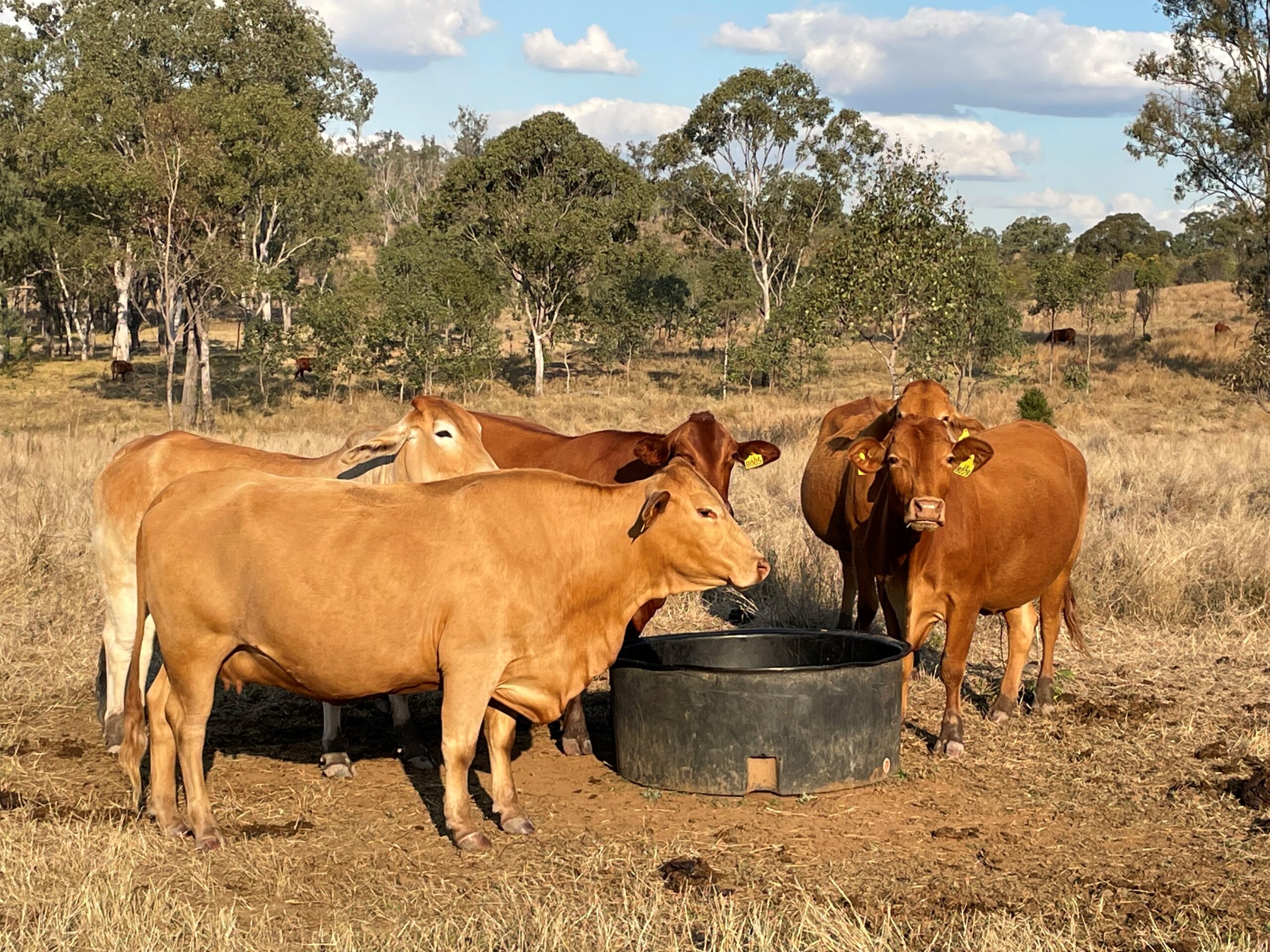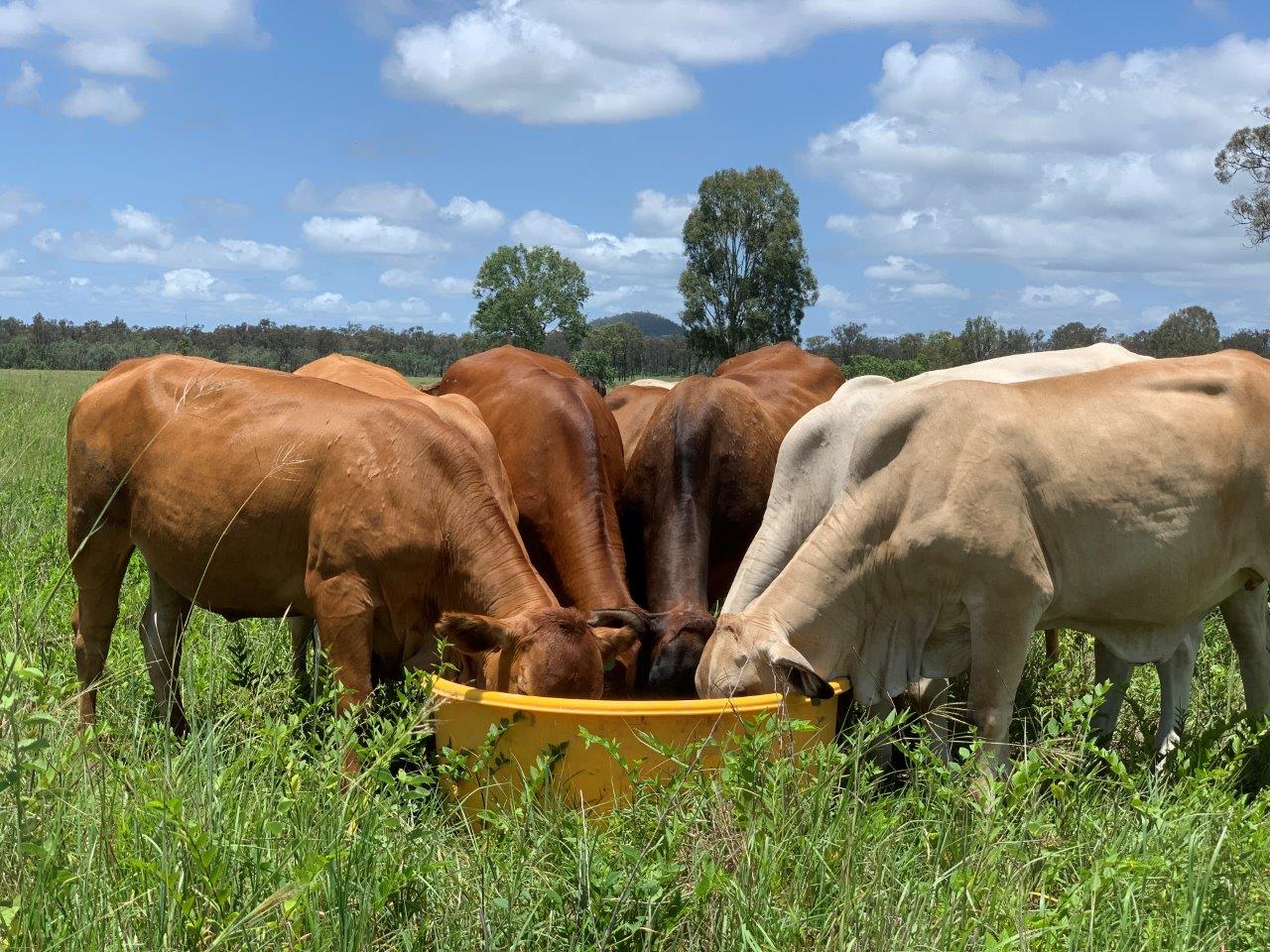The secret to successful supplementation
Many producers in north and north-west Queensland are supplementing cattle, but how can they tell if they are getting the most from this investment?
Department of Agriculture and Fisheries (DAF) senior beef extension officer Bernie English said to be cost-effective, supplementation programs must address the primary limiting nutrient first.
“Animal performance will be limited by the availability of the most limiting nutrient,” Mr English said.
“Supply of other nutrients will have no effect until this is corrected.”
Dry season
 In the dry season, the primary limiting nutrients are generally protein, then energy, then phosphorus.
In the dry season, the primary limiting nutrients are generally protein, then energy, then phosphorus.
“Protein levels in pasture drop off as the dry season progresses, so protein becomes limiting first,” Mr English said.
“Energy becomes limiting when there isn’t enough feed or the feed is of very low quality. Low-quality feed becomes indigestible and provides low amounts of energy in the diet. Compounding this is the resulting low intakes of pasture. Both the quantity and quality of feed are important.”
Mr English said phosphorus could be the limiting nutrient in acutely-deficient country, with demand for phosphorus higher during lactation and growth.
Wet season
 During the wet season, phosphorus becomes the primary limiting nutrient on phosphorus-deficient country.
During the wet season, phosphorus becomes the primary limiting nutrient on phosphorus-deficient country.
“Responses to phosphorus supplementation will be greater during the growing season,” Mr English said.
“On certain areas of ‘basalt’ country, phosphorus will be adequate but levels of salt and sulphur may limit production.”
Protein
Mr English said mature, dry pasture was usually low in protein.
“This results in reduced activity of rumen microbes, prolonging digestion and reducing intake of pasture,” he said.
“Providing a small amount of protein (150g per day for dry pregnant breeders, or 75g per day for weaners) may reduce weight loss, and in the very early dry season may allow dry stock to make slight weight gains.
“Correcting protein deficiencies for lactating cows in the dry season is much more difficult.
“Urea dry licks may not supply enough protein to correct the shortfall, due to the high requirements of lactation.”
Things to consider
Mr English concluded by saying it really came down to these five points:
- Level of performance required: maintenance or production (e.g. 0.2kg or 0.5kg a day)?
- Nutritional requirements to achieve this level of performance. It’s essential to identify nutrients that will limit animals’ ability to reach the performance target.
- Level of nutrients supplied by the pasture. The most accurate way to assess this is to use the Near Infrared Reflectance Spectroscopy (NIRS) tool.
- What level of nutrition is required to correct the nutrient shortfall? This is the difference between what cattle need to meet the desired level of performance and what the pasture is supplying. Supply the most limiting nutrient first—generally this is what the cattle will be most deficient in.
- How cost-effective is the supplement, given expected cattle performance?
More supplementation information
Dry season
Dry season management of a beef business (PDF, 6 MB) →
Protein and urea supplementation →
Molasses supplementation →
Wet season
Phosphorus supplementation →
New phosphorus nutrition tools →
Effect of phosphorus supplementation on Brahman females at Kidman Springs →
Breeder supplementation
Nutritional management of breeders →
Costing supplements →